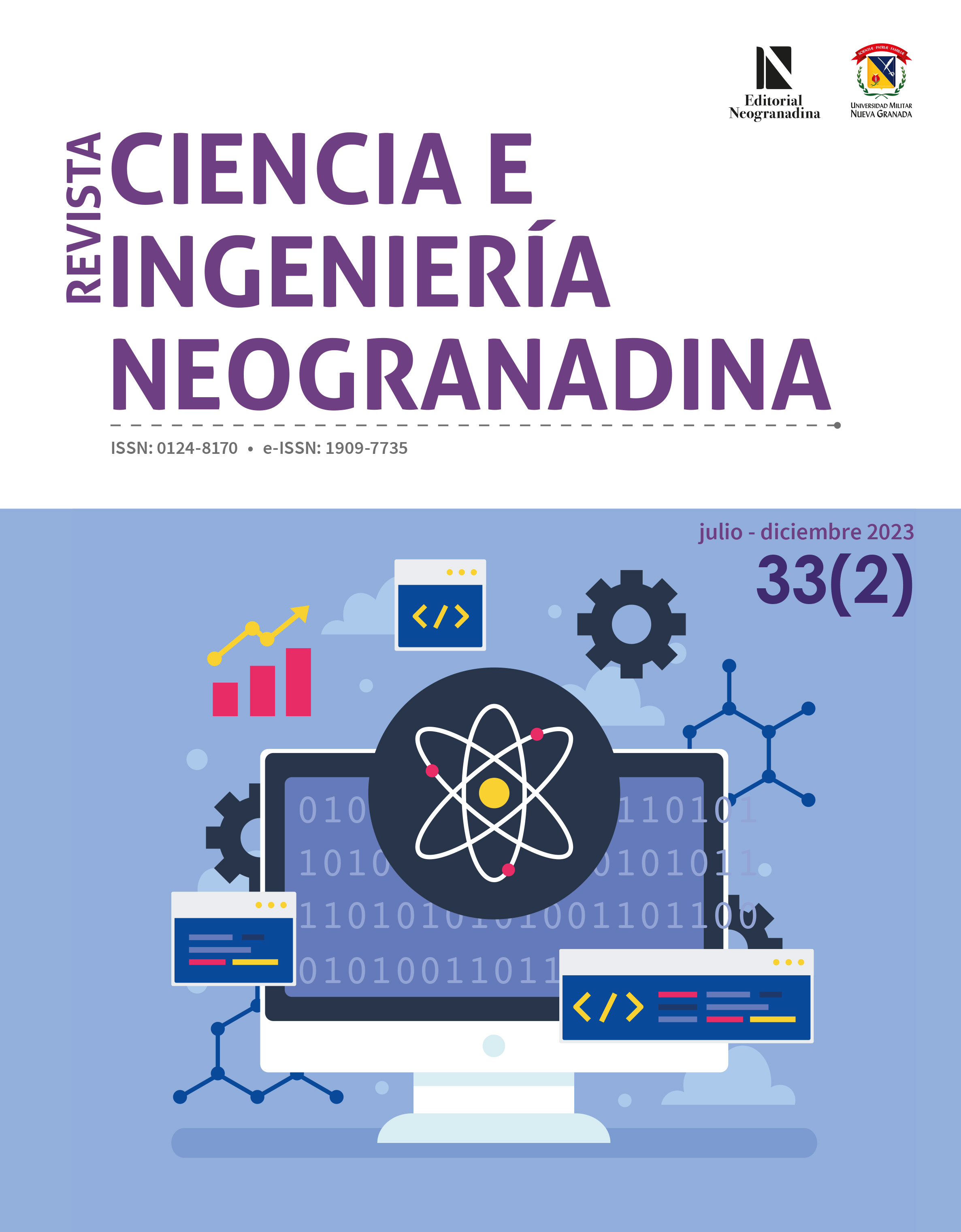Evaluación mecánica de una mezcla asfáltica tibia (WMA) utilizando aditivos modificadores de viscosidad
Resumen
La tecnología de mezcla asfáltica tibia (WMA) ha sido un incentivo en la industria asfáltica ya que contribuye a minimizar las emisiones de gases de efecto invernadero al medio ambiente, ayudando a reducir el calentamiento global y la huella de carbono. En esta investigación se evaluó experimentalmente el impacto de dos aditivos WMA sobre las características del ligante asfáltico y la mezcla asfáltica. Entre los resultados, se destacó el impacto de los aditivos en la propiedad de viscosidad del ligante asfáltico. Ambos aditivos redujeron la viscosidad a medida que aumentaba la temperatura en la mezcla. Con respecto a las mezclas asfálticas, la adición de aditivos wma tendió a aumentar la densidad aparente, los vacíos llenos de asfalto, la estabilidad Marshall y a reducir el contenido de vacíos de aire. La incorporación de estos aditivos puede reducir entre un 0.2 y un 0.4% el contenido óptimo de betún.
Descargas
Referencias bibliográficas
P. Kushwaha and A. S. Chauhan, "Pavement design and construction using warm mix asphalt: A bibliometric overview," Mater Today Proc, Mar. 2023, doi: 10.1016/j.matpr.2023.03.040.
M. Sukhija and N. Saboo, "A comprehensive review of warm mix asphalt mixtures-laboratory to field," Constr Build Mater, vol. 274, p. 121781, Mar. 2021, https://doi.org/10.1016/j.conbuildmat.2020.121781
M. J. Amirkhani, M. Fakhri, and A. Amirkhani, "Evaluating the use of different fillers and Kaowax additive in warm mix asphalt mixtures," Case Studies in Construction Materials, p. e02489, Dec. 2023,https://doi.org/10.1016/j.cscm.2023.e02489
D. Vaitkus, A., A. Čygas, Laurinavičius, and Z. Perveneckas, "Analysis and Evaluation of Possibilities for the Use of Warm Mix Asphalt in Lithuania," The Baltic Journal of Road and Bridge Engineering, vol. 4, no. 2, pp. 80-86, 2009,https://doi.org/10.3846/1822-427X.2009.4.80-86
G. Zhaoa and P. Guo, "Workability of Sasobit Warm Mixture Asphalt," Procedia engineering, vol. 16, pp. 1230-1236, 2012.https://doi.org/10.1016/j.egypro.2012.01.196
H. M. R. D. Silva, J. R. M. Oliveira, C. I. G. Ferreira, and P. A. A. Pereira, "Assessment of the Performance of Warm Mix Asphalts in Road Pavements," International Journal of Pavement Research and Technology, vol. 3, no. 3, pp. 119-127, 2010.
D. Newcomb, "Warm mix: the wave of the future?," HMAT: Hot Mix Asphalt Technology, vol. 10, no.4
T. Blankendaal, P. Schuur, and H. Voordijk, "Reducing the Environmental Impact of Concrete and Asphalt: A Scenario Approach," Journal of Cleaner Production, vol. 66, pp. 27-36, 2014, doi: https://doi.org/10.1016/j.jclepro.2013.10.012.
Y. Babangida Attahiru, A. Mohamed, A. Eltwati, A. A. Burga, A. Ibrahim, and A. M. Nabade, "Effect of waste cooking oil on warm mix asphalt block pavement - A comprehensive review," Physics and Chemistry of the Earth, Parts A/B/C, vol. 129, p. 103310, Feb. 2023, https://doi.org/10.1016/j.pce.2022.103310
Z. A. Xie, W. B. Fan, L. B. Wang, and J. Shen, "The Effectiviness of Warm Mix Asphalt (WMA) Additives Affected by the Type of Aggregate and Binder," International Journal of Pavement Research and Technology, vol. 6, no. 5, pp. 554-561, 2013.
X. Yang et al., "Environmental and Mechanical Performance of Crumb Rubber Modified Warm Mix Asphalt Using Evotherm," Journal of Cleaner Production, vol. 159, pp. 346-358, 2017, doi: https://doi.org/10.1016/j.jclepro.2017.04.168.
X. Wang, H., P. Liu, Apostolidis, and T. Scarpas, "Review of Warm Mix Rubberized Asphalt Concrete: Towards a Sustainable Paving Technology," Journal of Cleaner Production, vol. 177, pp. 302-314, 2018,https://doi.org/10.1016/j.jclepro.2017.12.245
C. Akisetty, F. Xiao, T. Gandhi, and S. Amirkhanian, "Estimating Correlations between Rheological and Engineering Properties of Rubberized Asphalt Concrete Mixtures Containing Warm Mix Asphalt Additive," Constr Build Mater, vol. 25, no. 2, pp. 950-956, 2011, https://doi.org/10.1016/j.conbuildmat.2010.06.087.
H. Rondón and F. Reyes, Pavimentos, Materiales, Construcción y Diseño. Bogotá. Colombia., 2015.
V. Kumar and E. Coleri, "Effects of finer gradation, temperature, warm mix additives, and compaction methods on density and performance of asphalt mixtures," Constr Build Mater, vol. 394, p. 132226, Aug. 2023,https://doi.org/10.1016/j.conbuildmat.2023.132226
A. M. S. Maidanova, S. N. Baranov, and N. V. Ivanov, "Influence of Natural Additives and Those Synthesized by the Fischer-Tropsch Method on the Properties of Petroleum Bitumen and Quality of Floated Asphalt," Coke and Chemistry, vol. 54, no. 1, pp. 26-31, 2011.https://doi.org/10.3103/S1068364X11010066
M. R. Mohd Hasan et al., "Effects of diluted methanol and water as foaming agents on the performance of latex foamed warm asphalt mixtures," Journal of Traffic and Transportation Engineering (English Edition), vol. 10, no. 3, pp. 413-426, Jun. 2023, https://doi.org/10.1016/j.jtte.2021.07.007
P. Caputo et al., "The Role of Additives in Warm Mix Asphalt Technology: An Insight into Their Mechanisms of Improving an Emerging Technology," Nanomaterials, vol. 10, no. 6, pp. 1-17, 2020, https://doi.org/10.3390/nano10061202
Derechos de autor 2023 Ciencia e Ingeniería Neogranadina

Esta obra está bajo una licencia internacional Creative Commons Atribución-NoComercial-SinDerivadas 4.0.











